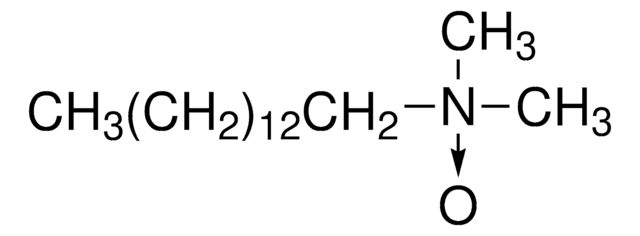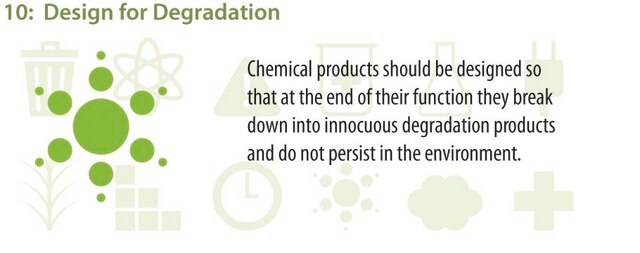おすすめの製品
詳細
non-ionic
品質水準
アッセイ
≥99.0% (NT)
フォーム
powder
分子量
201.35 g/mol
不純物
≤0.03% peroxides (as H2O2)
微量陰イオン
sulfate (SO42-): ≤50 mg/kg
微量陽イオン
Ca: ≤500 mg/kg
Cd: ≤5 mg/kg
Co: ≤5 mg/kg
Cr: ≤5 mg/kg
Cu: ≤5 mg/kg
Fe: ≤5 mg/kg
K: ≤50 mg/kg
Mg: ≤50 mg/kg
Mn: ≤5 mg/kg
Ni: ≤5 mg/kg
Pb: ≤5 mg/kg
Zn: ≤5 mg/kg
保管温度
2-8°C
SMILES記法
CCCCCCCCCC[N+](C)(C)[O-]
InChI
1S/C12H27NO/c1-4-5-6-7-8-9-10-11-12-13(2,3)14/h4-12H2,1-3H3
InChI Key
ZRKZFNZPJKEWPC-UHFFFAOYSA-N
関連するカテゴリー
詳細
アプリケーション
シグナルワード
Warning
危険有害性情報
危険有害性の分類
Eye Irrit. 2 - Skin Irrit. 2 - STOT SE 3
ターゲットの組織
Respiratory system
保管分類コード
11 - Combustible Solids
WGK
WGK 3
引火点(°F)
Not applicable
引火点(℃)
Not applicable
個人用保護具 (PPE)
dust mask type N95 (US), Eyeshields, Gloves
適用法令
試験研究用途を考慮した関連法令を主に挙げております。化学物質以外については、一部の情報のみ提供しています。 製品を安全かつ合法的に使用することは、使用者の義務です。最新情報により修正される場合があります。WEBの反映には時間を要することがあるため、適宜SDSをご参照ください。
Jan Code
40103-5G-F:
40103-VAR-F:
40103-1G-F:
40103-BULK-F:
この製品を見ている人はこちらもチェック
ライフサイエンス、有機合成、材料科学、クロマトグラフィー、分析など、あらゆる分野の研究に経験のあるメンバーがおります。.
製品に関するお問い合わせはこちら(テクニカルサービス)










